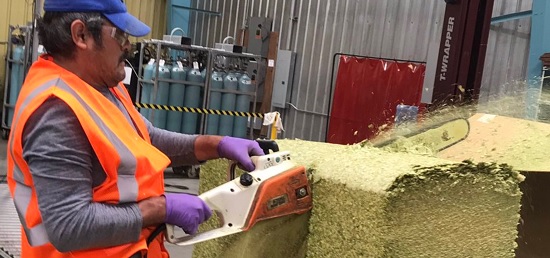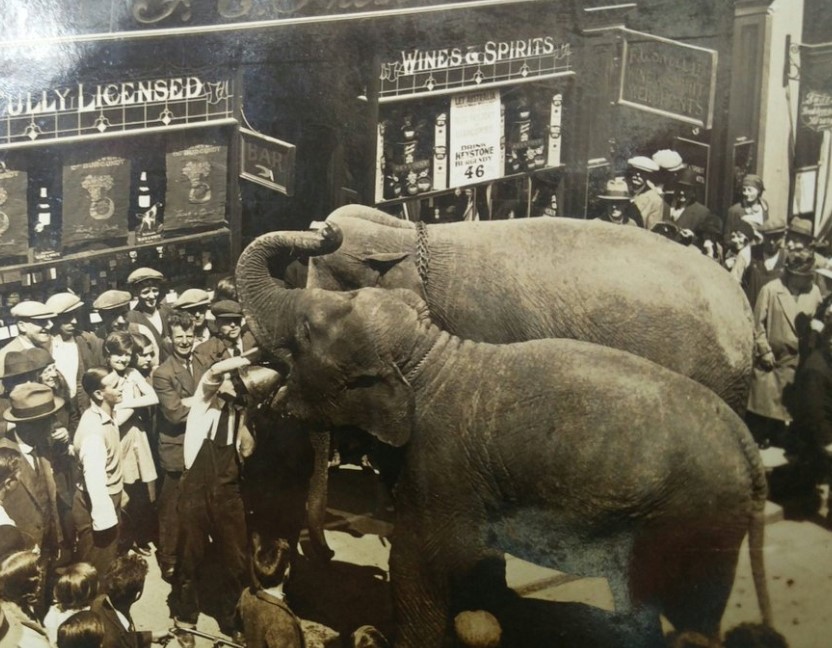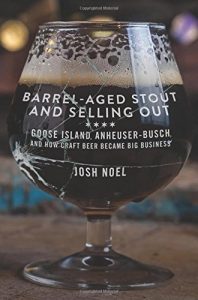So. Here we are again. This is a bad week. Traveling around central Canada. Long meetings. Hotel rooms. Fortunately, I am working on my Korean food skills as part of this road show. My newly increased obsession, kimchi is… well… it’s like a hipster Scot would have invented if Korea hadn’t done it first. Peace food. Other than that, its all hotel breakfast buffets and minivans fully of cheery engineers. Bounding down the highway balanced on a buffer of spicy exotic cabbage.
First off, I was alerted by someone no doubt more attentive that I am, given my kimchi induced food coma, that there has been a shock wave hammering those writing about the history of saison. You see, Roel Mulder has shared his thoughts of a fact-checking mission he undertook on the “2004 book Farmhouse ales, and especially the contribution it includes by Belgian brewer Yvan De Baets” and YdB is not too thrilled but sadly fell back on what looks like a status based defense in his extensive comments offered in response:
This is your website. By definition you will have the last word on it. Cool. I will not start a debate here anyway. I have more to say about some of your claims but I don’t have nor the time nor the desire to do it: not only I strongly dislike the ego battles, but more importantly the first tanks of our new brewery are arriving in a few weeks and I have to prepare them a nice nest.
Remember: watch out for expertise transposition. Few brewers are actually all that acquainted with the means and methods of the historian. Its not in the nature of the gig. Likewise, vice versa. Dig it? For me, however, I think the real problem is assuming anything written in 2004 is going to represent an exhaustive examination of a topic involving beer. A decade and a half is a long time for research to advance – especially when that decade and a half saw the explosion of the digitized historical records. That being the case, taking a strong stance either in favour or against such stale dated research is likely a mug’s game.
More convivially, Eric Asimov of The New York Times (who I like a lot) wrote a piece about the ciders of the Hudson Valley (which I like a lot):
All share a deep-seated desire to understand the traditions, nuances and complexities of apples and ciders. They are the latest wave of a great cider revival in the Northeast, reaching through New England, out to the Finger Lakes in western New York, and down through the Appalachians. For anyone used to most commercial ciders, which are often made from concentrate, sweetened and sometimes flavored, these serious ciders are a revelation. They are mostly bone dry, with the flavors of apples and of the region. Apples, too, it turns out, express a sense of place, what wine lovers call terroir.
Less authentically, apparently what was a contract brewery is now an app that the deal did not include. Figure out that one if you will… and this one for that matter:
Drinking at taprooms isn’t just en vogue, it’s a permanent part of today’s industry that now drives about 10% of Brewers Association-defined volume.
Permanent? You misspelled “today’s top fad” darling. Not unconnectedly, Matthew Curtis announced his retirement from the collective blog Good Beer Hunting. One never know what is behind “effective immediately” but one hopes its nothing too drastic. I line it up in my mind with the tweets about breweries hiring passionate beer comms for their passionate beer comms needs. All in all, a very tough row to hoe but hiring Rebecca would be a smart move, for example:
Hi guys! I’ll be looking for some freelance/ad hoc work after this month. I’m an accredited Beer Sommelier and was even nominated as Best Young Beer Writer this year by the @Britbeerwriters (!).’
You know, Pete Brown used to be a beer comms guy but he is no longer working for this sort of work. He is working on being a better Pete* – which is great – but once in a while loses his marbles most wonderfully:
Oh fuck off. I’m sorry (I’m trying to rein in the bad language and anger and be more professional) but fuck the fuck off. Even the most cursory reading of the history of pale ale/IPA shows this simply isn’t true.
Like others, I don’t really even care what he was writing about when he got so deliciously rude… but in case you are curious it was about a disappointing relaunch of Bass Ale.
Czech beer drinking in a slump.
 Tandleman has an opinion on the four Cloudwater cask offerings pending according to a tweet – as well as a very nice new profile photo of himself as you can see. He must have a good social media consultant. I wonder what social media consultants like that cost…
Tandleman has an opinion on the four Cloudwater cask offerings pending according to a tweet – as well as a very nice new profile photo of himself as you can see. He must have a good social media consultant. I wonder what social media consultants like that cost…
These days, calling anything “one of the most important beers in modern American brewing” is a bit silly but the Chicago Tribune found cause to so publish in relation to Allagash Brewing’s Coolship Resurgam. I remember about a decade ago getting in a handbags match over someone claiming one US brewery or another was the first to do something to which I replied something something about the Allagash coolship – which Ron will correct correctly as being a “cooler” in English. These things get heated. Fortunately, even the shock of the new is past us now given we live in hyperspace and no one really cares, knowing that next week’s new thing will in turn be stale by the following weekend. Just hope the Allagash beer is tasty.
As noted last week, readbeer.com is up and running. We now can see the output of 63 different sources of online beer writing. That will grow and with it the decentralized, leveled goodness of blogs will return. One of the great things about the former RSBS was how access to ideas was not being filtered through the gauze of self-proclaimed expertise or assertions of journalism. Access was immediate and it was up to the reader to sift clues. Soon there will be 630 feeds. Best to keep up.
Well, that is enough for now. I am closer to home for most of next week so maybe this will be more considered. Maybe something big will happen that will fill the thousand words with one long observation. Maybe I will sit and count the days to first Christmas and then Spring Training. That’s more like it. In the meantime, check in with Boak and Bailey for the regular Saturday update.
* Fab.








